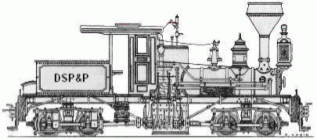.jpg) |
The concrete mixing crew. |
.jpg) |
The form. |
.jpg) |
The pouring crew |
.jpg) |
Jay Auer of the mixing crew and the remaining bags of cement not yet mixed |
.jpg) |
The crew from left to right: Jordan Dill, Bonnie Huggins, Jay Auer, Todd Pace and, of course, my wife who is not in the picture.
Jay and Todd were the mixing crew. I was the pourer, Jordan was the tamper and finisher. Bonnie was in charge of water for the mixing crew. And Linda made sure everyone was fed and watered. |
.jpg) |
Fifty nine 60 pound bags of Quikrete later we have the finished product. |
.jpg) |
We put gravel around the edges. |
.jpg) |
We wet the still curing concrete and covered it to help keep it moist.
Then we left for Oregon for 3 weeks. |
.jpg) |
I built a jig for putting together track panels. |
.jpg) |
Track gauge that spaces the rails and centers them on the ties. |
.jpg) |
Overhead view of track panel being built. |
.jpg) |
The first track panel placed in the grade crossing form. |
.jpg) |
I built a structure to build both straight and curved track panels on. |
.jpg) |
The side for building straight track panels. |
.jpg) |
The curved panel jig with the rail bender on the top. |
.jpg) |
A curved panel under construction. |
.jpg) |
Curved track panels connecting the track on the grade crossing with the switch. |
.jpg) |
Both track panels in the grade crossing.
The grade crossing is 16 ft. long, 18 in. wide and the concrete is 1 ft. thick. |
.jpg) |
Grade crossing looking from the other end. |
.jpg) |
Grade crossing with deck boards placed between the rails and between the outside of the rails and the concrete.
This provides a smooth path to drive across the track. |
.jpg) |
The finished grade crossing from the other end. |
